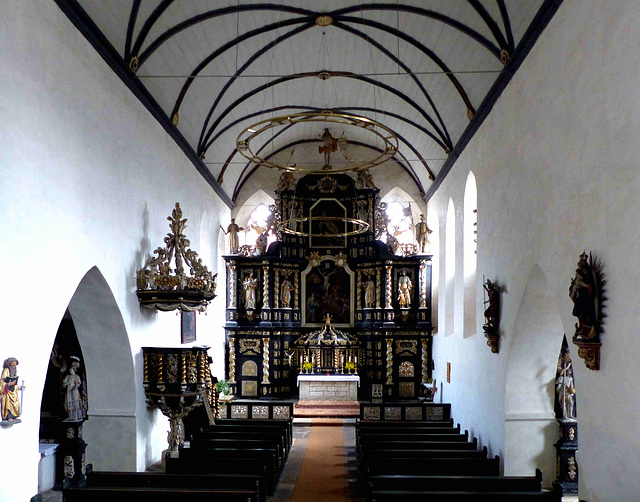Hadmersleben - St. Peter und St. Paul
Hadmersleben - St. Peter und St. Paul
Hadmersleben - St. Peter und St. Paul
Hadmersleben - St. Peter und St. Paul
Hadmersleben - St. Peter und St. Paul
Hadmersleben - Kloster Hadmersleben
Osnabrueck - St. Marien
Osnabrueck - St. Marien
Osnabrueck - St. Marien
Osnabrueck - Town Hall
Muenster - Town Hall
Location
Lat, Lng:
Lat, Lng:
You can copy the above to your favourite mapping app.
Address: unknown
Lat, Lng:
You can copy the above to your favourite mapping app.
Address: unknown
See also...
Keywords
Authorizations, license
-
Visible by: Everyone -
All rights reserved
-
56 visits
Hadmersleben - St. Peter und St. Paul


Kloster Hadmersleben (Hadmersleben monastery) was founded in 961 by the (six-year-old) King Otto II. There was quite a row because Bishop Bernhard von Halberstadt had refused to cede Magdeburg to Otto I as an archbishopric, even though the Pope wanted it. The bishop's refusal led to his nickname "Eisenkopf" (ironhead). The nunnery was not a really great success, and so the then bishop of Halberstadt wrote in 1120: "The piety of the nuns of Hadmersleben has not only fallen asleep but has completely died out." Thanks to a capable abbess, the convent soon became successful and in 1160 the building of the chapter house began. Around 1320 the construction of the Gothic monastery church began.
But then the convent fell into disrepair again until the nuns joined the Bursfeld congregation. Hadmersleben Abbey is one of the few monasteries in the Archdiocese of Magdeburg that remained Catholic beyond the Reformation and the Thirty Years' War. The Peace of Westphalia of 1648 made this possible.
In 1809, by decree of the King of Westphalia Jérôme Bonaparte, brother of Napoleon, the dissolution of the monastery was ordered. However, the affiliated parish remained.
St. Peter and St. Paul was the monastery church and has been a parish church since the Reformation. Since the 10th century, three construction phases can be identified. In the 13th and 14th centuries, the nave was renovated in early Gothic style in two construction phases, and a large gallery for the nuns was built above the older lower church (PoV). During the Thirty Years' War, the church was plundered and partially destroyed. From 1696 to 1710 the interior of the church was made baroque.
But then the convent fell into disrepair again until the nuns joined the Bursfeld congregation. Hadmersleben Abbey is one of the few monasteries in the Archdiocese of Magdeburg that remained Catholic beyond the Reformation and the Thirty Years' War. The Peace of Westphalia of 1648 made this possible.
In 1809, by decree of the King of Westphalia Jérôme Bonaparte, brother of Napoleon, the dissolution of the monastery was ordered. However, the affiliated parish remained.
St. Peter and St. Paul was the monastery church and has been a parish church since the Reformation. Since the 10th century, three construction phases can be identified. In the 13th and 14th centuries, the nave was renovated in early Gothic style in two construction phases, and a large gallery for the nuns was built above the older lower church (PoV). During the Thirty Years' War, the church was plundered and partially destroyed. From 1696 to 1710 the interior of the church was made baroque.
aNNa schramm, Marco F. Delminho, Paolo Tanino have particularly liked this photo
- Keyboard shortcuts:
Jump to top
RSS feed- Latest comments - Subscribe to the comment feeds of this photo
- ipernity © 2007-2024
- Help & Contact
|
Club news
|
About ipernity
|
History |
ipernity Club & Prices |
Guide of good conduct
Donate | Group guidelines | Privacy policy | Terms of use | Statutes | In memoria -
Facebook
Twitter

Sign-in to write a comment.